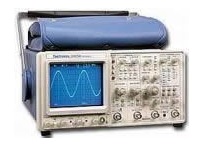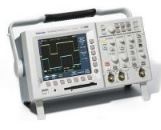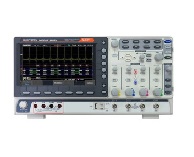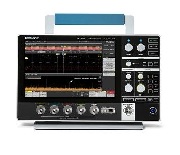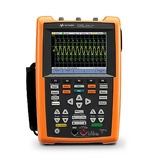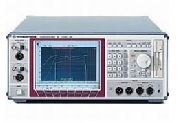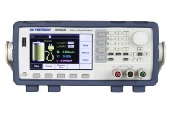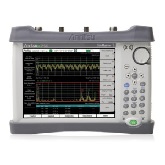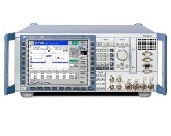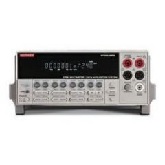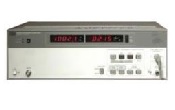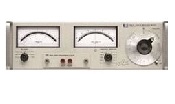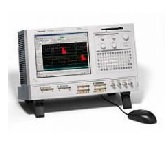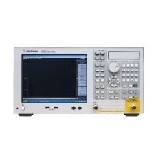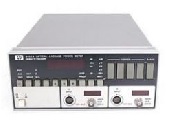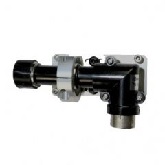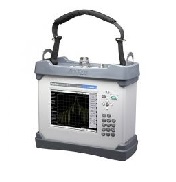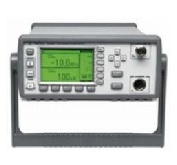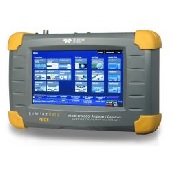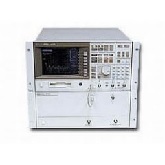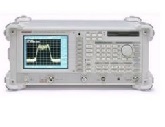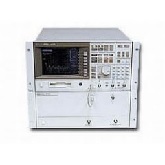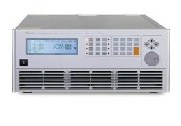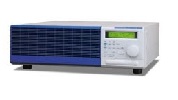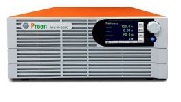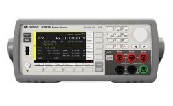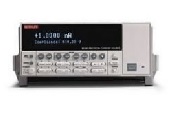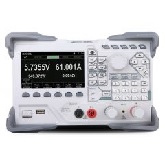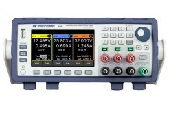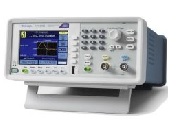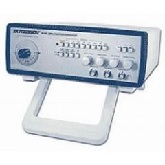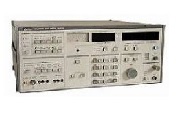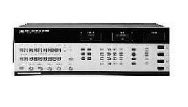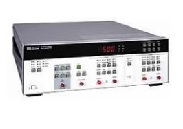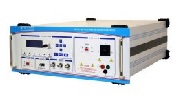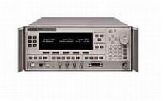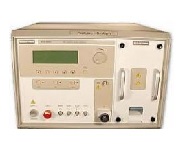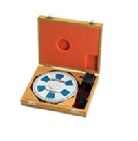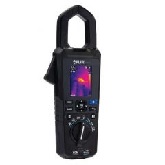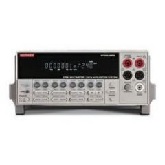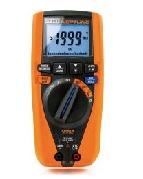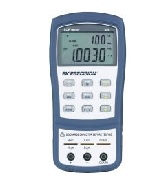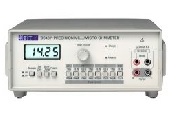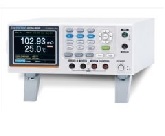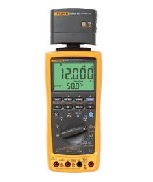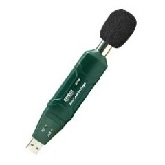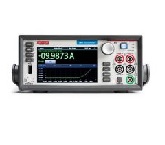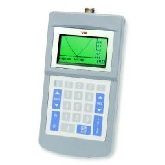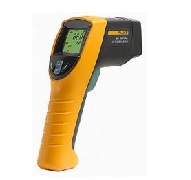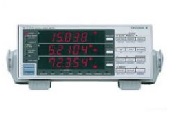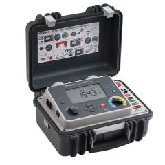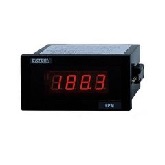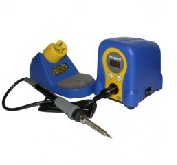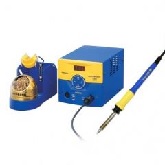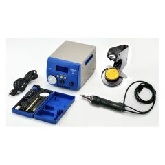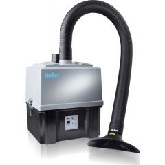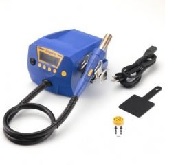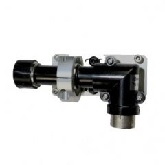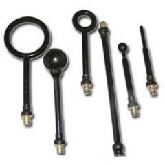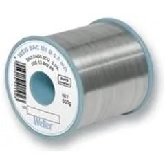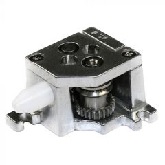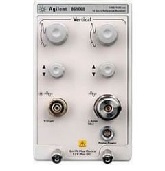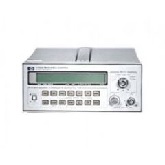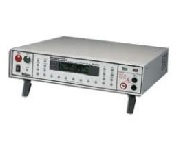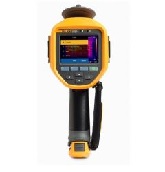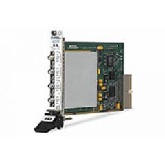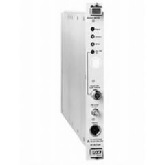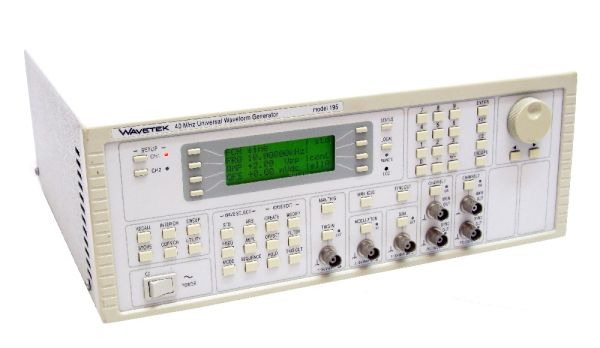Features:
Waveforms
Standard Waveforms
- Sine, square, triangle, DC, positive ramp, negative ramp, sin(x)/x, pulse, pulse train, cosine, haversine and havercosine.
Sine, Cosine, Haversine, Havercosine
- Range: 0.1mHz to 16 MHz
- Resolution: 0.1mHz or 7 digits
- Accuracy: 10 ppm for 1 year
- Output Level: 2.5mV to 10Vp-p into 50Ω
- Harmonic Distortion: <0.1% THD to 100kHz
Square
- Range: 1mHz to 16MHz
- Resolution: 1mHz (4 digits)
- Accuracy: ± 1 digit of setting
- Output Level: 2.5mV to 10Vp-p into 50Ω
- Rise and Fall Times: <25ns
Triangle
- Range: 0.1mHz to 100kHz
- Resolution: 0.1mHz or 7 digits
- Accuracy: 10 ppm for 1 year
- Output Level: 2.5mV to 10Vp-p into 50Ω
Ramps and Sin(x)/x
- Range: 0.1mHz to 100kHz
- Resolution: 0.1mHz (7 digits)
- Accuracy: 10 ppm for 1 year
- Output Level: 2.5mV to 10Vp-p into 50Ω
- Linearity Error: <0.1% to 30 kHz
Pulse and Pulse Train
- Output Level: 2.5mV to 10Vp-p into 50Ω
- Rise and Fall Times: <25ns
Period
- Range: 100ns to 100s
- Resolution: 4-digit
- Accuracy: ±1 digit of setting
Delay
- Range: -99.99s to + 99.99s
- Resolution: 0.002% of period or 25ns, whichever is greater
Width
- Range: 25ns to 99.99s
- Resolution: 0.002% of period or 25ns, whichever is greater
Note: Pulse width and absolute value of the delay may not exceed the pulse period. Pulse trains up to 10 pulses may be specified, each pulse having independently defined width, delay and level. Baseline voltage is separately defined and sequence repetition rate is set by pulse train period.
Arbitrary
- Up to 100 user defined waveforms may be stored in RAM.
- Waveforms can be defined by front panel editing controls or by downloading waveform data via RS232 or GPIB.
- Memory Size: 64k points per channel.
- Vertical Resolution: 12 bits
- Sample Clock Range: 100mHz to 40MHz
Sequence
- Up to 16 waveforms may be linked. Each waveform can have a loop count of up to 32,768. Sequence can be looped up to 1,048,575 times or continuously.
- Output Filters: 16MHz Elliptic, 10MHz Elliptic, 10MHz Bessel or none.
Operating modes
Triggered Burst
- Each active edge of the trigger signal will produce one burst of the waveform
Gated
- Waveform runs while the Gate signal is true and stop while false.
Sweep
- Frequency sweep capability is provided for standard and arbitrary waveforms. Arbitrary waveforms are expanded or condensed to exactly 4096 points and DDS techniques are used to perform the sweep. Sweep Modes are linear or logarithmic; up or down; up/down or down/up
- Sweep time: 30ms - 999s
- Sweep range: 1mHz - 16MHz in one range
Tone Switching
- Capability provided for standard and arbitrary waveforms
- Arbitrary waveforms are expanded or condensed to exactly 4096 points and DDS techniques are used to allow instantaneous frequency switching
- Carrier Waveforms: All waveforms except pulse, pulse train and sequence
- Frequency List: Up to 16 frequencies from 1mHz to 10MHz
Trigger Generator
- Internal source 0.005 Hz to 100kHz square wave
- Available for external use from any SYNC OUT socket
Outputs
- Main Output - One for each channel
- Output Impedance: 50Ω
- Amplitude: 5mV to 20Vp-p open circuit (2.5mV to 10Vp-p into 50Ω)
- Amplitude Accuracy: 2% +/-1mV at 1kHz into 50Ω
- Amplitude Flatness: +/-0.2dB to 200 kHz; +/-1dB to 10 MHz; +/-2dB to 16 MHz
- DC Offset Range: +/-10V. DC offset plus signal peak limited to +/-10V from 50Ω
- DC Offset Accuracy: Typically 3% +/-10mV, unattenuated
- Resolution: 3 digits or 1mV for both Amplitude and DC Offset
Sync Out - One for each channel
Multifunction output user definable or automatically selected to be any of the following:
- Waveform Sync: A square wave with 50% duty (all waveforms) cycle at the main waveform frequency, or a pulse coincident with the start of an arbitrary waveform.
- Position Markers: Any point(s) on the waveform (arbitrary only) may have associated marker bit(s) set high or low.
- Burst Done: Produces a pulse coincident with the last cycle of a burst.
- Sequence Sync: Produces a pulse coincident with the end of a waveform sequence.
- Trigger: Selects the current trigger signal.
- Sweep Sync: Outputs a pulse at the start of sweep to synchronize an oscilloscope or recorder.
- Phase Lock Out: Used to phase lock two generators. Produces a positive edge at the 0° phase point.
- Output Signal Level: TTL/CMOS logic levels from typically 50Ω
Cursor/Marker Out
- Adjustable output pulse for use as a marker in sweep mode or as a cursor in arbitrary waveform editing mode.
- Can be used to modulate the Z-axis of an oscilloscope or be displayed on a second scope channel.
- Output Signal Level: Adjustable from nominally 2V to 14V, normal or inverted; adjustable width as a cursor.
- Output Impedance: 600Ω typical
Inputs
Trig In
- Frequency Range: DC-1MHz.
- Signal Range: Threshold nominally TTL
- Level: maximum input +/-10V.
- Minimum Pulse Width: 50ns, for Trigger and Gate modes; 50us for Sweep mode.
- Polarity: Selectable as high/rising edge or low/falling edge.
- Input Impedance: 10kΩ
Modulation In
- Frequency Range: DC - 100kHz.
- Signal Range: 1V for 100% level change at maximum output
- Input Impedance: Typically 1kΩ
Sum In
- Frequency Range: DC - 8MHz.
- Signal Range: Approximately 2Vpk-pk input for 20Vpk-pk output.
- Input Impedance: Typically 1kW.
Hold
- Holds an arbitrary waveform at its current position. A TTL low level or switch closure causes the waveform to stop at the current position and wait until a TTL high level or switch opening which allows the waveform to continue.
- The front panel HOLD key or remote command may also be used to control the Hold function.
- Input Impedance: 10Ω
- Ref Clock In/Out
- Set to Input: Input for an external 10MHz reference clock. TTL/CMOS threshold level.
- Set to Output: Buffered version of the internal 10MHz clock. Output levels nominally 1V and 4V from 50Ω
Inter-channel operation
Inter-channel Modulation
- The waveform from any channel may be used to Amplitude Modulate (AM) or Suppressed Carrier Modulate (SCM) the next channel. Alternatively, any number of channels may be Modulated (AM or SCM) with the signal at the MODULATION input socket.
- Carrier frequency: Entire range for selected waveform.
- Carrier waveforms: All standard and arbitrary waveforms.
- Modulation Types
- AM: Double sideband with carrier.
- SCM: Double sideband suppressed carrier.
- Modulation source: Internal or External
- Frequency Range: DC to >100 kHz.
- Internal AM:
- Depth: 0% to 105%
- Resolution: 1%.
- Carrier Suppression (SCM): > -40dB.
- External Modulation Signal Range: Approximately 1V pk-pk for 100% level change at maximum output.
Inter-channel Analog Summing
- Waveform Summing sums the waveform from any channel into the next channel. Alternatively, any number of channels may be summed with the signal at the SUM input socket.
- Carrier frequency: Entire range for selected waveform.
- Carrier waveforms: All standard and arbitrary waveforms.
- Sum source: Internal or External
- Frequency Range: DC to 8MHz.
- External Signal Range: Approximately 5Vpk-pk input for 20Vpk-pk output.
Inter-channel Phase locking
- Two or more channels may be phase locked together. One channel is assigned as the Master and the other channels as Slaves. Each Slave can have a phase angle relative to the Master. Arbitrary waveforms and waveform sequences may be phase locked but certain constraints apply to waveform lengths and clock frequency ratios.
Phase Resolution
- DDS waveforms: 0.1°
- Non-DDS waveforms: 0.1° or 360°/ number of points whichever is the greater.
Phase Error
- All waveforms: <+/-10ns
- The signals from the REF IN/OUT socket and the SYNC OUT socket can be used to phase lock two instruments.
Inter-channel Triggering
- Any channel can be triggered by the previous or next channel.
- The previous/next connections can be used to ‘daisy chain’ a trigger signal from a ‘start’ channel, through any number of channels to an ‘end’ channel.
- In this way, complex and versatile inter-channel trigger schemes may be set up. Each channel can have its trigger out and its output waveform set up independently.
- Trigger out may be selected from Waveform End, Position Markers, Sequence Sync or Burst Done.
- Using this scheme, it is possible to create a sequence of up to 64 waveform segments, each channel producing up to 16 segments and all channels being summed to produce the complete waveform at the output of channel 4.
Interfaces
- Full remote control facilities are available through the RS232 or GPIB interfaces.
- RS232: Variable Baud rate, 9600 Baud maximum. 9-pin D-connector.
- IEEE-488: IEEE488.1 and IEEE488.2
General
- Display: 20 character x 4 row alphanumeric LCD
- Data Entry: Keyboard selection of mode, waveform etc.; value entry direct by numeric keys or by rotary control
- Stored Settings: Up to 9 complete instrument set-ups may be stored and recalled from battery-backed memory. Up to 100 arbitrary waveforms can also be stored independent of the instrument settings.
- Size: H x W x D: 130 (3U) x 350 x 335mm
- Power: 230V, 115V or 100V nominal 50/60Hz, 100VA max.
- Operating Range: +5°C to 40°C, 20-80% RH.
- Storage Range: -20°C to + 60°C.
- Environmental: Indoor use at altitudes up to 2000m, Pollution Degree 2.
- Option: 19-inch rack mounting kit.
- Safety: Complies with: EN61010-1.
- EMC: Complies with EN50081-1 and EN50082-1.
The Wavetek 195 Universal Waveform Generator has sophisticated capabilities that make generating complex signals easy and convenient. Combining synthesized performance with 2 or 4 independent 40 MS/s channels, the 195 is a powerful test tool for a wide variety of applications. The 195 uses a combination of direct digital synthesis, phase lock loop techniques and innovative firmware to provide high performance and extensive facilities in a compact instrument.
The 195 provides sine and square waves up to 16 MHz. Some of the other standard functions include DC, positive ramp, negative ramp, pulse, pulse train, sin (x)/x, cosine, haversine and havercosine waveforms. With 7-digit resolution and 10 ppm accuracy for sine waves, the 195 is ideal for multi-channel applications requiring standard functions.
| Manufacturer | WaveTek |
|---|---|
| Condition | Used |
| Frequency | 16 MHz |
| 001 | 2 Additional Channels |
|---|


